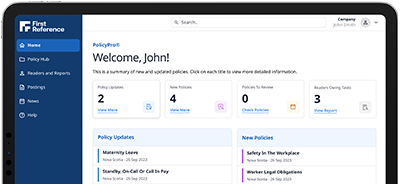
How AI is changing hiring: The opportunities and challenges
SpringLaw

AI is becoming a game-changer in hiring and workplace decisions. It’s helping companies streamline recruitment, make smarter choices, and even tackle bias in the process. But two time-tested sayings apply:
- With great power comes great responsibility—using AI the wrong way can lead to privacy issues or even human rights concerns.
- Trust but verify – AI is a great tool, but is not infallible, having a human oversight layer is crucial.
Even the most advanced AI systems can make mistakes, misinterpret data, or perpetuate biases hidden in their training. Employers need to double-check AI-driven decisions to ensure they align with fairness, ethics, and the unique needs of their organization. By combining AI’s efficiency with human judgment, businesses can leverage its benefits without compromising on accountability or transparency.
What is AI doing?
AI is really shaking things up in recruitment and workforce management. Here are some popular ways it’s being used, along with considerations for maintaining personal engagement:
- Resume screening: AI can scan resumes to find candidates with the right skills and experience.
However, relying solely on AI may overlook unique qualities that don’t fit neatly into algorithmic patterns, so human review remains essential for a balanced perspective. - Chatbots for first-round screening: Chatbots handle basic interviews, answer candidate questions, and collect key info.
While efficient, it’s important to ensure that candidates feel valued and have opportunities to interact with real people as they progress through the hiring process. - Skills testing: AI tools can evaluate candidates on specific tasks or abilities, providing data-driven results.
To address concerns about impersonal assessments, employers should pair AI insights with personalized feedback to enhance candidate engagement. - Predicting success: Some tools analyze patterns in a person’s background to predict how well they’d do in a role.These predictions should be supplemented with human judgment to account for individual potential and non-quantifiable traits.
- Tracking performance: Even after hiring, AI monitors productivity, identifies training needs, and spots skill gaps.
While useful, companies must communicate how this data is used and involve employees in discussions to foster trust and collaboration.
Balancing AI’s efficiency with thoughtful human involvement is key to avoiding potential pitfalls.
Creative vs. technical AI: Which fits your needs?
The type of role you’re hiring for often determines whether you lean on creative AI or technical AI.
Creative AI
This is best for roles where innovation and originality are key.
For example:
- Content creation: Tools like ChatGPT can help draft job postings or recruitment materials.
- Portfolio analysis: AI can scan creative portfolios for patterns in design, marketing, or visual art.
- Team collaboration: Some AI tools assess team dynamics to identify candidates who thrive in group settings.
The challenge? Creativity is subjective, and AI might not always get it right—keywords don’t always equal talent.
Technical AI
For roles that require measurable skills and outcomes, technical AI might be the way to go.
Examples include:
- Coding tests: Automated platforms can assess programming skills.
- Data-driven predictions: AI analyzes past performance to predict future success.
- Skills matching: Tools align a candidate’s qualifications with job requirements using clear metrics.
While technical AI is great for objective roles, it can overlook candidates with unconventional paths who have tons of potential.
AI disclosure rules in Ontario
In Ontario, if you’re using AI in your hiring process, you have to be upfront about it. A new law—the Working for Workers Act, 2023—requires job postings to mention if AI tools are being used to screen or select candidates.
Considerations for employers
If you’re using AI in hiring, here’s what you need to keep in mind:
- Disclose AI use: Make it clear in your job postings that AI tools are part of the process.
- Avoid bias: Ensure your tools don’t lead to discriminatory outcomes—it’s the law under the Ontario Human Rights Code.
- Be transparent: Let candidates know how AI influences decisions and give them a chance to ask questions or appeal.
Staying legal and ethical
Here are some key points to consider:
- Watch for bias: AI learns from data, and if the data has biases, the results will too. Double-check that your tools comply with anti-discrimination laws.
- Protect privacy: If AI tools process personal data, you might need to explain how it’s being used and get consent under privacy laws like PIPEDA.
- Use human oversight: AI is a tool—not the boss. Final decisions should always involve a human touch.
How employers can play it smart
Want to use AI responsibly? Start here:
- Audit your tools: Regularly review your AI’s algorithms and data sources to make sure they’re fair and compliant.
- Train your team: Help HR staff understand the ethical and legal implications of using AI.
- Seek legal advice: Consult with legal experts to keep your practices above board.
- Measure results: Track the outcomes of AI-driven decisions to catch and correct unintended issues.
Final thoughts
AI has huge potential to improve hiring and workforce management, but it’s not a magic wand. By understanding the difference between creative and technical AI, being transparent, and staying compliant with laws, you can harness AI’s benefits while avoiding pitfalls.
If you’re considering AI tools or need help navigating the legal side of things, reach out. We’re here to help you get it right!
By Jeffrey Adams, SpringLaw
Table of Contents
Compliance Made Easy®

